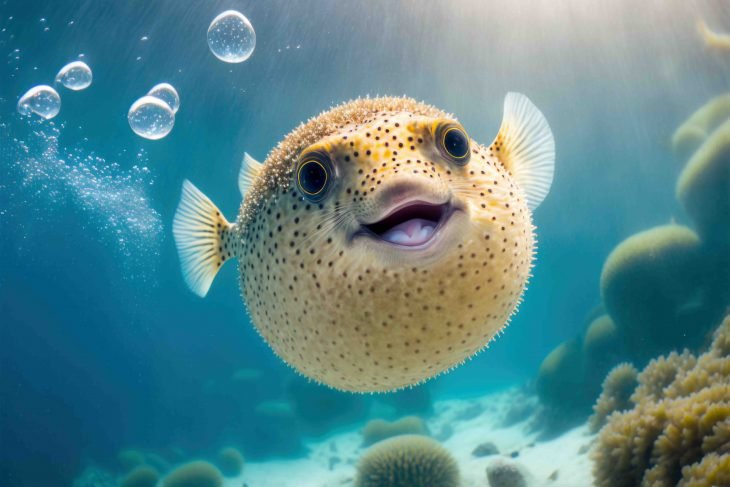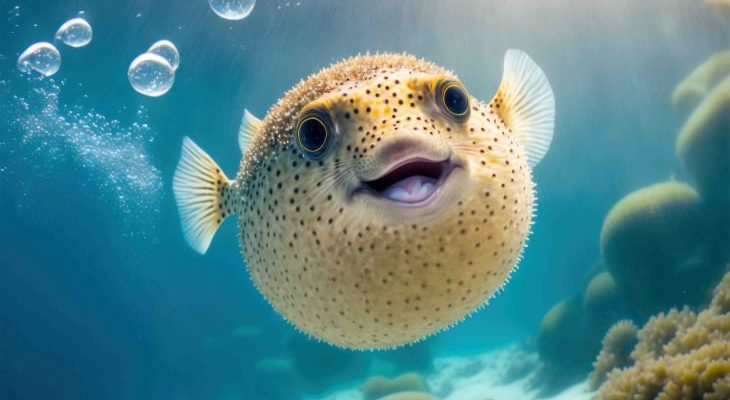
Pufferfish belong to the family Tetraodontidae, and there are many species out there, each with its own quirks and quirks. Think of them as the clowns of the ocean—playful yet dangerous. Unfortunately, like many marine animals, they face serious threats due to human activity and environmental change. Understanding whether they’re endangered brings us one step closer to protecting these unique beings. So, grab your coffee, and let’s dig into the world of pufferfish conservation!
Understanding Pufferfish Habitat and Behavior
Pufferfish inhabit a variety of environments, from coral reefs to open oceans. They are generally found in warm waters, which makes them particularly vulnerable to climate change. Warmer ocean temperatures can affect their reproductive patterns and food sources, leaving them with fewer options for survival. Climate change is like a domino effect; once one piece falls, it can lead to a cascade of issues for pufferfish and their ecosystems.
In addition to environmental factors, the pufferfish’s behavior plays a crucial role in their survival. They have a fascinating defense mechanism: when threatened, they puff up into a spiky ball, deterring predators. However, this behavior can also make them more susceptible to other dangers, like pollution and habitat destruction. Imagine you’re trying to flee from danger, but all of a sudden, you can’t move because you’re stuck in a balloon! That’s how these fish might feel during tough times.
Moreover, pufferfish have a complex diet that mainly includes invertebrates and algae. Their feeding habits can influence the health of ocean ecosystems. Sadly, as their habitats shrink and degrade, they may struggle to find food. This brings us to one of the primary reasons why conservation of pufferfish is essential.
The Threats Facing Pufferfish
Pufferfish face a range of dangers that contribute to their declining numbers. The major threats include overfishing, habitat loss, and pollution.
- Overfishing: Many coastal communities rely on fishing for sustenance, and unfortunately, this includes pufferfish. Some species are captured for food, especially in regions where they are considered a delicacy.
- Habitat Loss: Coastal development, such as building resorts and urban areas, destroys the natural habitats where pufferfish thrive. Think of it like moving into a new apartment and finding all the best spots taken—it’s tough to settle in when your home is being taken away.
- Pollution: Chemicals and waste that end up in our oceans can have detrimental effects on marine life. Pufferfish are particularly susceptible due to their diet and habitat. If their food sources are contaminated, it can lead to health problems for the fish and the entire food chain.
Each of these threats plays a part in the broader issue of marine conservation. If we want to keep pufferfish around for future generations, it’s crucial to address these challenges.
Current Conservation Status of Pufferfish
Now, let’s get down to the specifics: Are pufferfish endangered? The truth is, it depends on the species. Some pufferfish species are listed as vulnerable, while others are classified as near threatened or even endangered, according to the International Union for Conservation of Nature (IUCN). For example, the Mbu pufferfish, found in the Congo Basin, is endangered due to habitat degradation and over-exploitation.
Here’s the thing: conservation status can vary significantly between species. Researchers are working to monitor populations and assess changes in their numbers. This helps conservationists identify which species need immediate attention and which are doing okay. Without these updates, it would be challenging to implement effective conservation strategies.
Furthermore, conservation efforts involve collaboration between countries, organizations, and local communities. By pooling information and resources, we can create comprehensive plans to protect these unique fish and their habitats.
Efforts to Protect Pufferfish
Conservation efforts are underway to help shield pufferfish from extinction. Organizations around the globe are creating marine protected areas (MPAs) where fishing is restricted, allowing pufferfish populations to thrive. It’s like giving them a safe haven where they can live without fear of being overfished.
In addition, sustainable fishing practices are being promoted. Educating local fishermen about the importance of not overexploiting pufferfish and how to fish responsibly can make a significant impact. This is where community involvement becomes crucial. When locals understand the benefits of conserving pufferfish, they’re more likely to support protective measures.
You might also find that some aquariums are breeding pufferfish in captivity to reduce pressure on wild populations. This not only helps maintain genetic diversity but also raises awareness about their conservation. So next time you visit an aquarium, keep an eye out for these unique creatures and consider supporting their cause.
What You Can Do to Help
Feeling inspired? You don’t need to be a marine biologist to help pufferfish and their conservation efforts. Here are some simple steps you can take:
- Educate Yourself: The more you know about pufferfish and their habitats, the better equipped you are to contribute to their protection.
- Support Sustainable Seafood: Choose seafood that comes from sustainable sources. Look for eco-labels and certifications that indicate responsible fishing practices.
- Participate in Clean-Up Efforts: Join beach or ocean clean-up activities in your area. Reducing pollution helps protect marine life, including pufferfish.
- Spread the Word: Share what you learn about pufferfish conservation with your friends and family. The more people who know, the greater the impact we can make together.
Every little bit counts, and collective action can lead to significant change.
The Future of Pufferfish Conservation
The future of pufferfish depends on how we address the challenges they face today. While progress is being made through various conservation initiatives, there’s still a long way to go. Ongoing research, community involvement, and global collaboration are vital.
As we develop more sustainable practices and protect marine ecosystems, we pave the way for a healthier ocean environment—not just for pufferfish but for countless other species. Imagine a time when pufferfish are no longer at risk of becoming endangered. It’s possible, but it requires continued effort and commitment.
In closing, understanding whether pufferfish are endangered is more than just a question about their status. It’s about recognizing their important role in the ecosystem and our responsibility to protect them. Every action, big or small, can contribute to a brighter future for these quirky ocean dwellers. So, let’s keep the conversation going and work together to ensure that pufferfish are around for generations to come.

